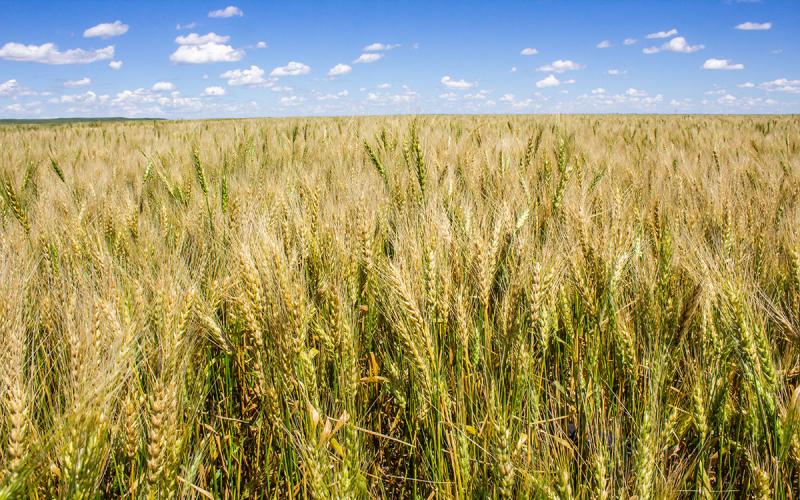
Originally Published: April 17, 2020
Written collaboratively by Emmanuel Byamukama, former SDSU Extension Plant Pathologist; and Jonathan Kleinjan, former SDSU Extension Agronomist.
Are you thinking about planting spring wheat into a previous cornmilo field but are concerned about scab (also known as Fusaruim head blight/FHB) inoculum? Due to current grain prices and other reasons, growers may be considering planting spring wheat into fields that were planted to corn or milo last season. While this type of crop rotation is not generally recommended, economic and logistical challenges sometimes may dictate otherwise.
The scab pathogen, Fusarium graminearum, survives on corn stalks, small grain stubble, and wild grass hosts, therefore inoculum is abundant in most growing seasons. However, infection that results in scab development in wheat heads takes place through the flower. The level of scab severity is influenced by the susceptibility of the wheat variety planted and the weather conditions from heading through initial stages of grain development (pollination and early grain-fill). While the disease develops later in the season, there are few early-season practices that can help minimize the risk of scab development.
Start by selecting a well-adapted, high yielding, scab resistant/tolerant spring wheat variety. A few scab resistant/tolerant spring wheat varieties are available. Examples include Focus, Forefront, Boost, and others. Scab reaction ratings for spring wheat varieties from the SDSU Extension Crop Performance Testing scab nursery are available online. Varieties are rated from 1 (most resistant) to 9 (most susceptible). Varieties rated 4 or lower are generally considered to have adequate levels of scab resistance.
Consider baling previous crop stalks if there are excessive amounts of crop residue on the soil surface. As mentioned above, the scab pathogen can survive on corn, milo, and other cereal crops residue. Baling these stalks will reduce inoculum in addition to providing a better environment for spring wheat emergence.
Plan for a fungicide application timed at flowering. Fungicides labeled for scab are effective in reducing scab development as well as preventing mycotoxin accumulation from scab fungus. If the weather from wheat head emergence through flowering is humid (frequent rainfall) and warm (77-86 F), a fungicide at flowering would be highly recommended. Scab forecasting tools are available to help the growers monitor the risk of scab and make decisions to apply a fungicide against scab (Fusarium Risk Tool or Mesonet at SDState). Fungicides effective against scab include Prosaro, Caramba, Miravis Ace, and others.
If planting bin-run seed that may be infected with scab from a previous growing season, a fungicide seed treatment may help to boost seedling vigor and prevent seedling blight caused by the scab pathogen. Examples of fungicides effective against scab pathogen in wheat seed can be found in the FHB column on page 50 of the 2020 South Dakota Pest Management Guide - Wheat. It is important to understand that planting scabby seed will not result in scab infested wheat heads later in the season. The fungus is not systemic. Instead, spores are blown from infested corn stalks or small grains stubble onto the wheat flowers.


